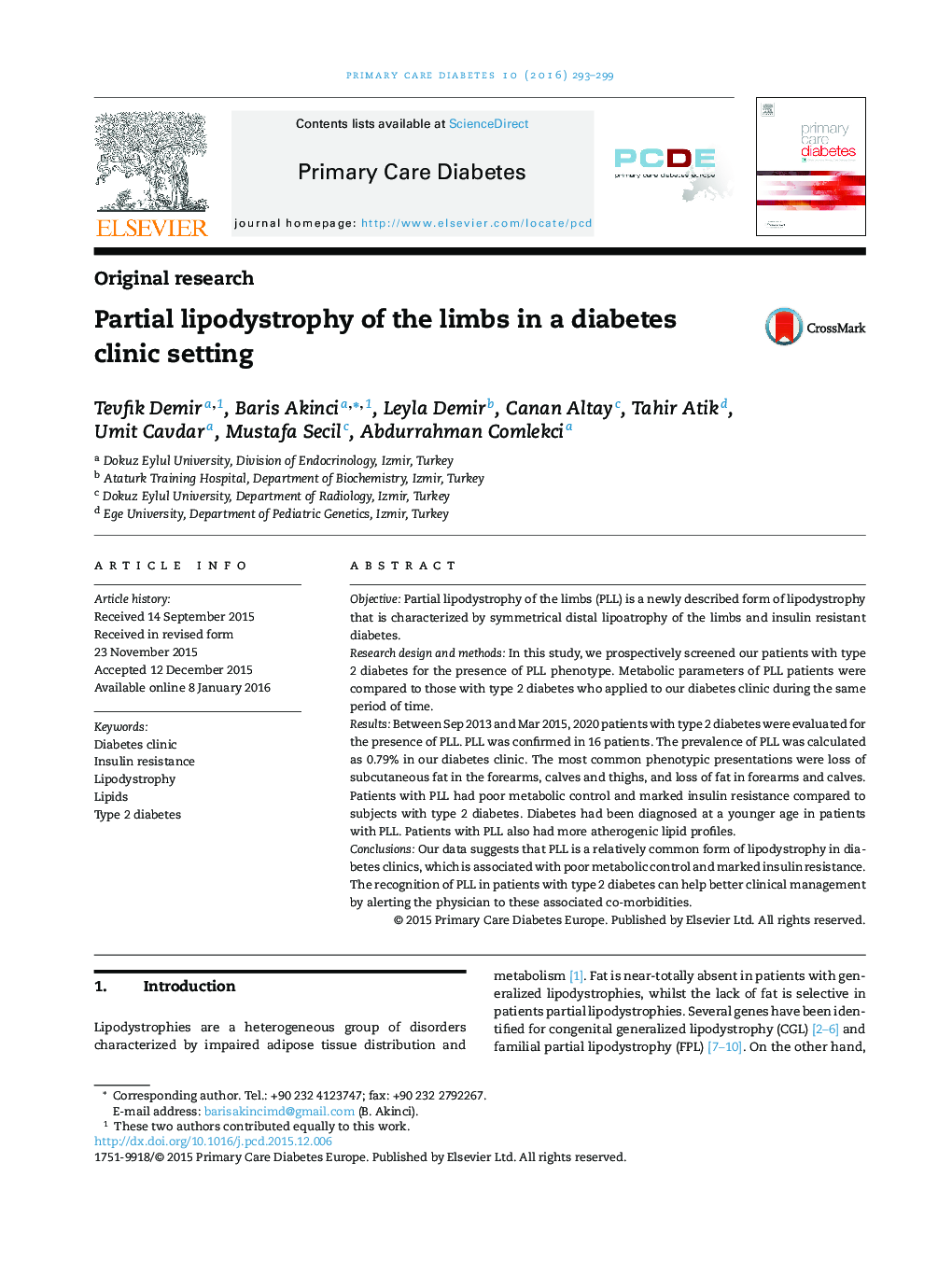| Article ID | Journal | Published Year | Pages | File Type |
|---|---|---|---|---|
| 2680725 | Primary Care Diabetes | 2016 | 7 Pages |
•Partial lipodystrophy of the limbs (PLL) is a recently described form of lipodystrophy.•In contrast to other types of lipodystrophies, PLL is relatively common among patients with type 2 diabetes.•PLL is associated with marked insulin resistance and poor metabolic control.
ObjectivePartial lipodystrophy of the limbs (PLL) is a newly described form of lipodystrophy that is characterized by symmetrical distal lipoatrophy of the limbs and insulin resistant diabetes.Research design and methodsIn this study, we prospectively screened our patients with type 2 diabetes for the presence of PLL phenotype. Metabolic parameters of PLL patients were compared to those with type 2 diabetes who applied to our diabetes clinic during the same period of time.ResultsBetween Sep 2013 and Mar 2015, 2020 patients with type 2 diabetes were evaluated for the presence of PLL. PLL was confirmed in 16 patients. The prevalence of PLL was calculated as 0.79% in our diabetes clinic. The most common phenotypic presentations were loss of subcutaneous fat in the forearms, calves and thighs, and loss of fat in forearms and calves. Patients with PLL had poor metabolic control and marked insulin resistance compared to subjects with type 2 diabetes. Diabetes had been diagnosed at a younger age in patients with PLL. Patients with PLL also had more atherogenic lipid profiles.ConclusionsOur data suggests that PLL is a relatively common form of lipodystrophy in diabetes clinics, which is associated with poor metabolic control and marked insulin resistance. The recognition of PLL in patients with type 2 diabetes can help better clinical management by alerting the physician to these associated co-morbidities.
